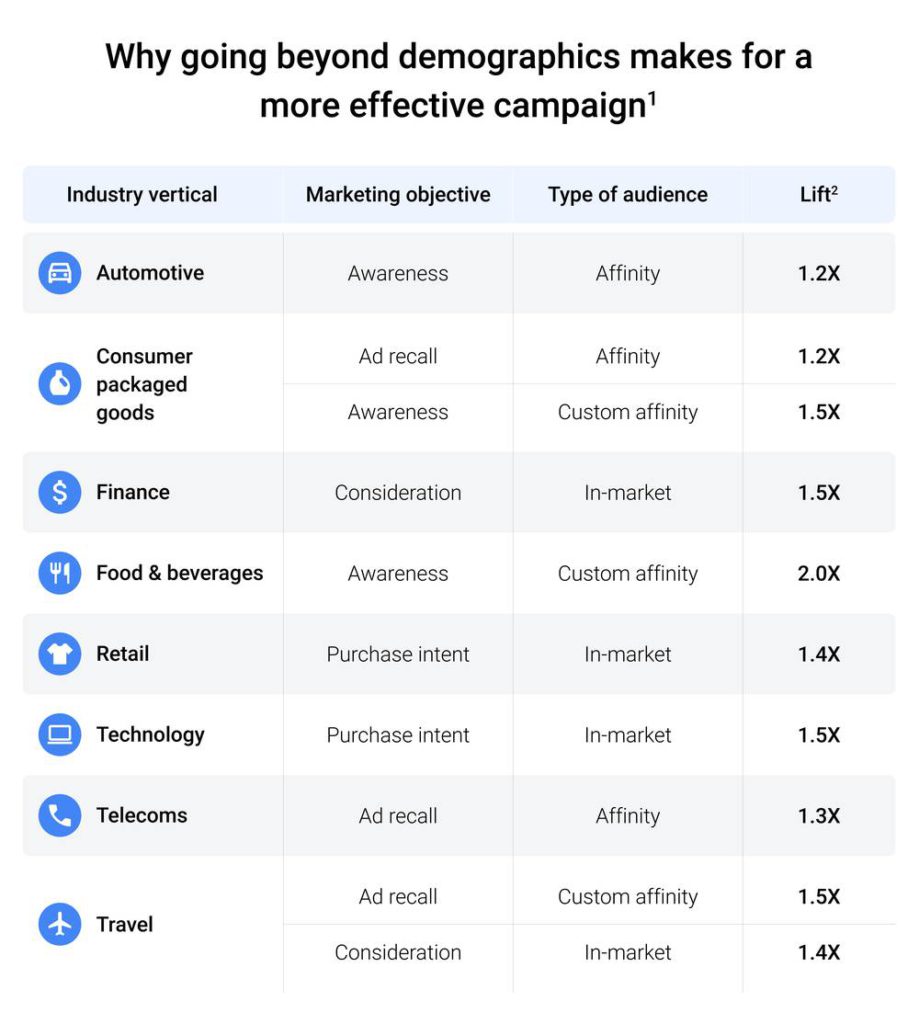Find better audiences for your YouTube ads
We have long been told that when we base a campaign on demographics alone, we only get a one-dimensional view of our audience. However, we continue to use factors such as age and gender to promote ads. As a result, we run the risk of creating and delivering campaigns that our audience considers irrelevant so that in the end we fail to impact our true audience.
This way of creating audiences is intuitive and the better you understand your audience, the better your chances of selling your brand or products. Whether your clients are planning their vacations, looking for a new cell phone, developing a passion for extreme sports, or changing their eating habits, if you are speaking to the right person, you can expect better results from your marketing efforts.
Seeking to obtain information not only from intuition, I bring you an analysis of why you should carry out your campaigns taking into account more variables than just demographics.
2 years of marketing campaign data analysis
Using the Google Brand Lift tool, which measures how a video ad affects metrics such as brand recognition, ad recall, and consideration, Google conducted a performance analysis of the last 2 years on YouTube campaigns. This information was obtained from companies in 10 different industries including automotive, retail, and tourism.
While some of these YouTube campaigns used only demographic variables, such as women aged 25 to 34, to capture potential clients, others created more complete audiences using Custom Audiences.
This tool helps advertisers find users based on their interests, based on the videos they watch on YouTube. This information can suggest whether users are food enthusiasts, travel buffs, or beauty experts. The platform calls these pre-built groups Afine Audiences. In the same way, advertisers can create their own Related Audiences based on detailed information specific to their brand. Rather than only reaching out to foodies, a non-dairy milk brand might want to reach out to vegan foodies. These groups are called Custom Affine Audiences. In this way, brands can reach people who are usually looking for certain types of products or services.
In the analysis performed, the baseline increase was first calculated for each metric in each industry. How effective was the use of audiences created based on user interests rather than the aforementioned demographics was then measured. We finally isolated those campaigns that used Custom Audiences to see what kind of increase in marketing metrics they had compared to their industry average.
Measurement results
Indeed, the information collected was consistent with the hypothesis. Better understanding of the audiences you are trying to reach leads to better marketing results.
Across all industries, campaigns that used Custom Audiences saw an increase in almost all of their marketing objectives. Campaigns based on user audiences looking for specific products such as financial ones, saw a 50% increase in purchase intent. Similarly, the retail campaigns saw an increase in the 40% also evaluating the purchase intention and using user audiences that search for these specific products.
When using the Audience Affinity segmentation format, the campaigns in the telecommunications sector saw a 30% of growth in recalling an ad and the campaigns in the food and beverages sector, saw a growth of 20% in brand recognition using the same Affinity system.

The Audience Affinity segmentation method had an increase in the Technology category, in which users are looking for specific products. However, for campaigns in the Telecommunications category, those outdoor enthusiasts and fashion lovers were some of the audiences with the highest ad recall rate. A telecommunications advertiser who wants to raise awareness about a new mobile phone plan might not have thought that these people would be especially interested in your offering, thus missing an opportunity to communicate with potential customers.
Go beyond demographic variables
It is important to bear in mind that these discoveries are not causal and therefore do not guarantee results in future campaigns. However, they offer interesting information that advertisers can use to act immediately.
The first lesson is obvious, you cannot rely solely on demographic variables. With the tools and technology currently available, it is possible to have a better understanding of your customers and use that information to ensure that you are reaching the right audience. If you're launching a YouTube campaign to promote a new fashion line, instead of guessing who might be interested based on overly broad categories like age and gender, use an existing Audience Affinity group of fashionistas.
The second lesson is that your customer base is probably more heterogeneous than you might expect. Who would think that a lover of the great outdoors would be particularly receptive to telecommunications advertisements? So before launching a new campaign, try to test your ads with audience groups that you might not otherwise have considered.
Finally once you've mastered these two lessons, consider customizing your audiences even more. For example, if you are launching a new line of low-sugar snacks via YouTube, create a Custom Audience Affinity group that particularly looks for users who may be interested, instead of using the pre-established audience groups. In this way you can create a video completely designed for this audience.
From this analysis it is clear that users are much more multidimensional than we as advertisers have historically believed. It is time for our marketing strategy to catch up, so I recommend you use these methods in the next campaigns you do on YouTube and write me in the comments what your results were.